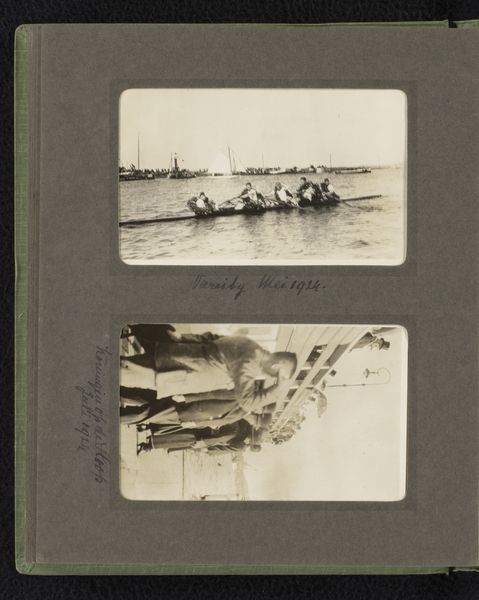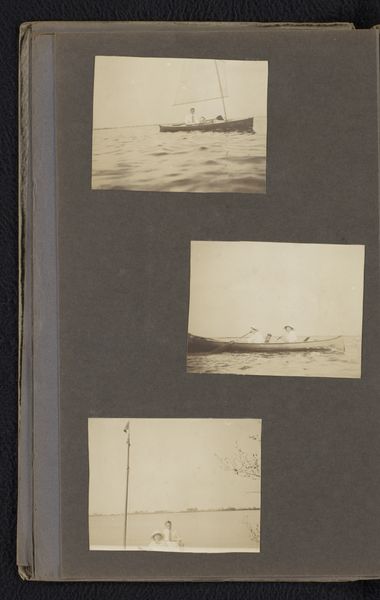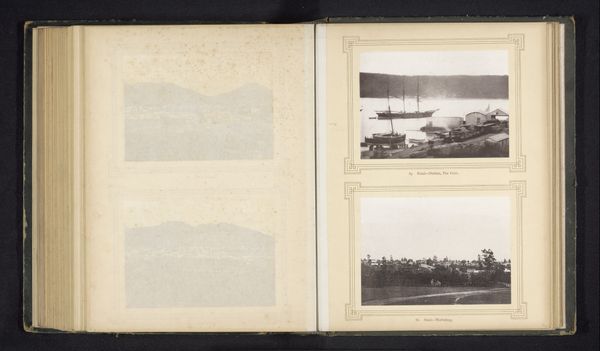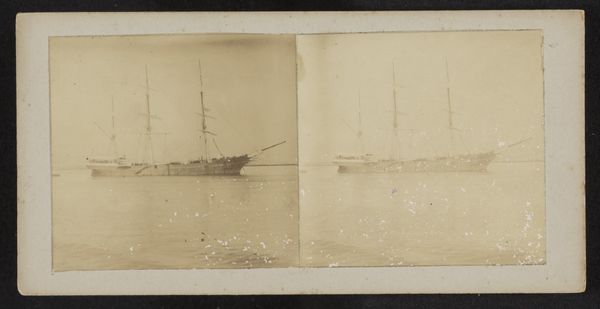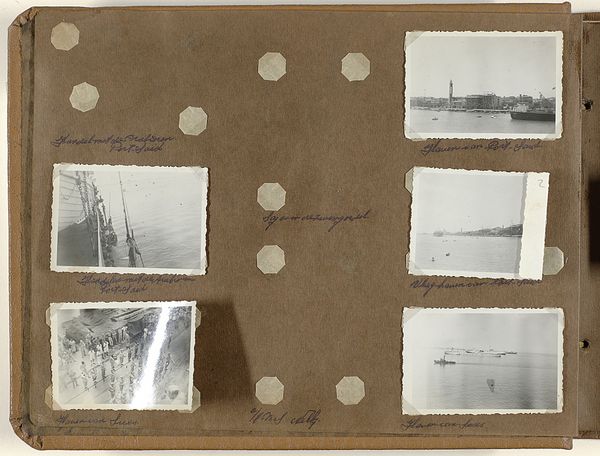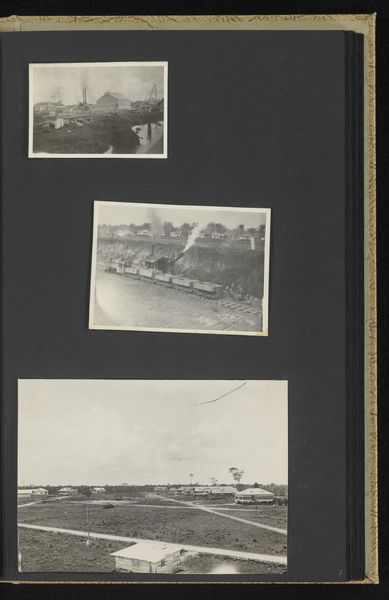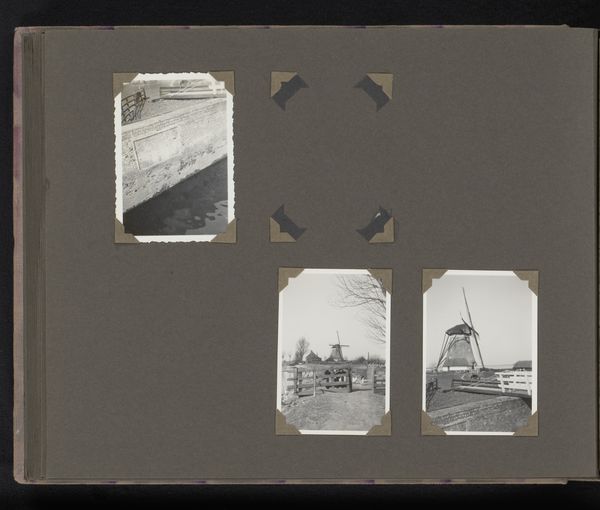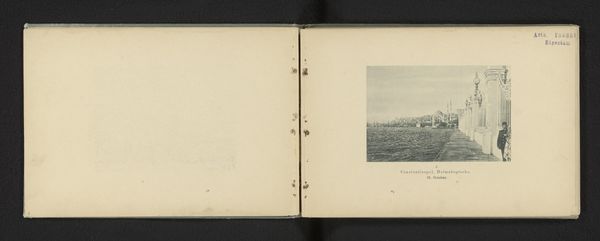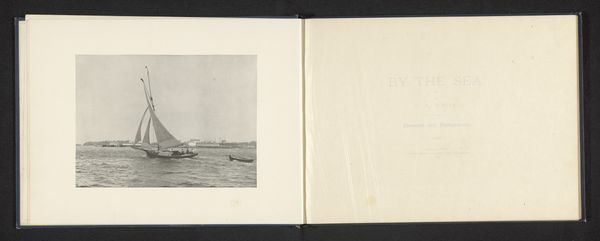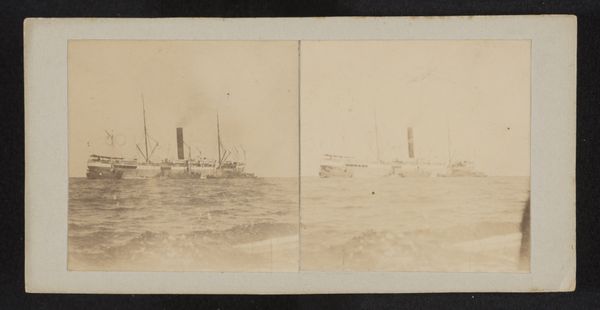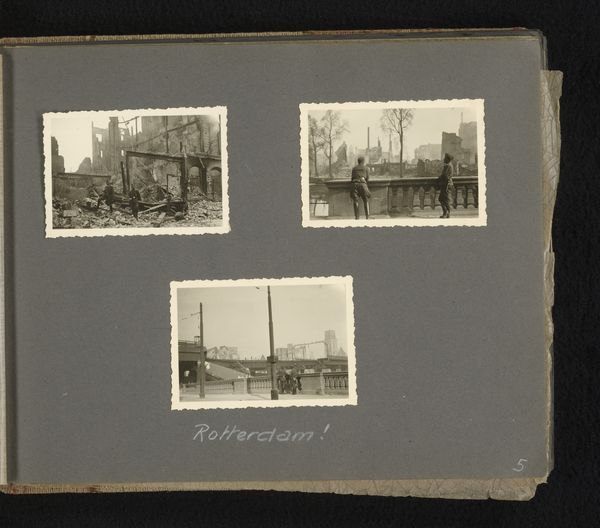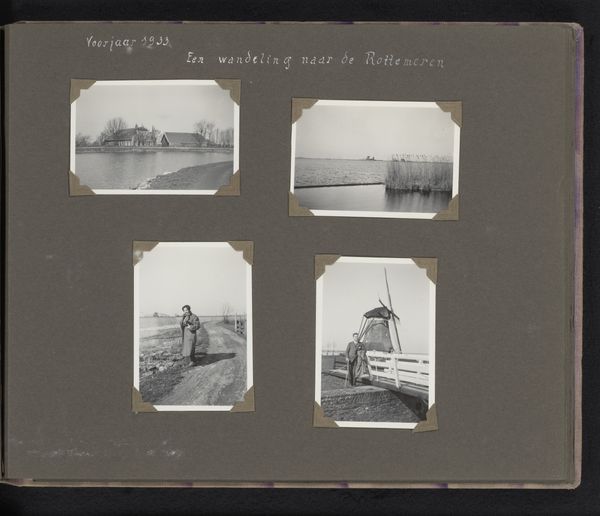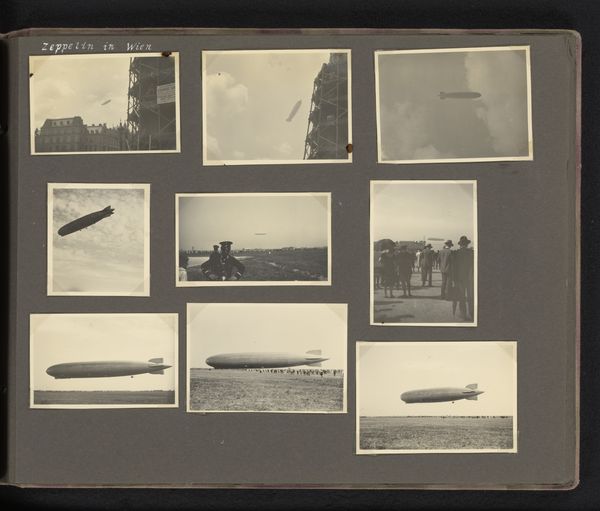
photography
#
sculpture
#
landscape
#
photography
#
muted colour
#
muted tone
Dimensions: height 60 mm, width 90 mm, height 160 mm, width 135 mm
Copyright: Rijks Museum: Open Domain
Editor: This photo, possibly from 1929, is called "Gezicht op de Maas / Graf Zeppelin," and it seems to be a page from a photo album featuring two muted, grayish photos. One shows what appears to be a river with a building on the shoreline, while the second features a zeppelin floating in the sky. It gives me a sense of both quietness and impending modernity. What stands out to you? Curator: Immediately, the juxtaposition of these images evokes a tension between the terrestrial and the aerial, the grounded and the aspirational. The "Maas" – a vital waterway – symbolizes established trade and life, doesn't it? And then we have the Zeppelin, a futuristic marvel representing technological ambition. Notice how the muted tones almost neutralize these contrasting forces, hinting perhaps at the anxiety or uncertainty surrounding such rapid advancements. Does this resonate with you? Editor: Definitely. It’s like a moment of pause before a leap into the unknown. I also notice that both images have this vintage look, being held in place by those photo corners, and encased in what appears to be an album page, which gives me a feeling of time standing still. How do you see the artist using these images to express meaning through their arrangement and the symbolic content of each photo? Curator: Precisely! The album page becomes a frame, containing not just images but fragments of memory and collective experience. The arrangement guides our eye and our thought: the "Maas," a familiar landmark, followed by the Zeppelin, a signifier of progress and potential conflict, particularly given the historical context leading up to the Second World War. What narratives might these photographs be preserving or even obscuring? Editor: I hadn’t thought of it that way. I was just focused on the pictures, but now, understanding it as a deliberate arrangement in an album… It speaks volumes! I will definitely remember that these images don’t exist in isolation and I will think more about their narrative within their original setting. Curator: And consider, what has time and the act of memorialization added to the picture, to the collective story it symbolizes? I see this anonymous album page as an emotional roadmap.
Comments
No comments
Be the first to comment and join the conversation on the ultimate creative platform.
